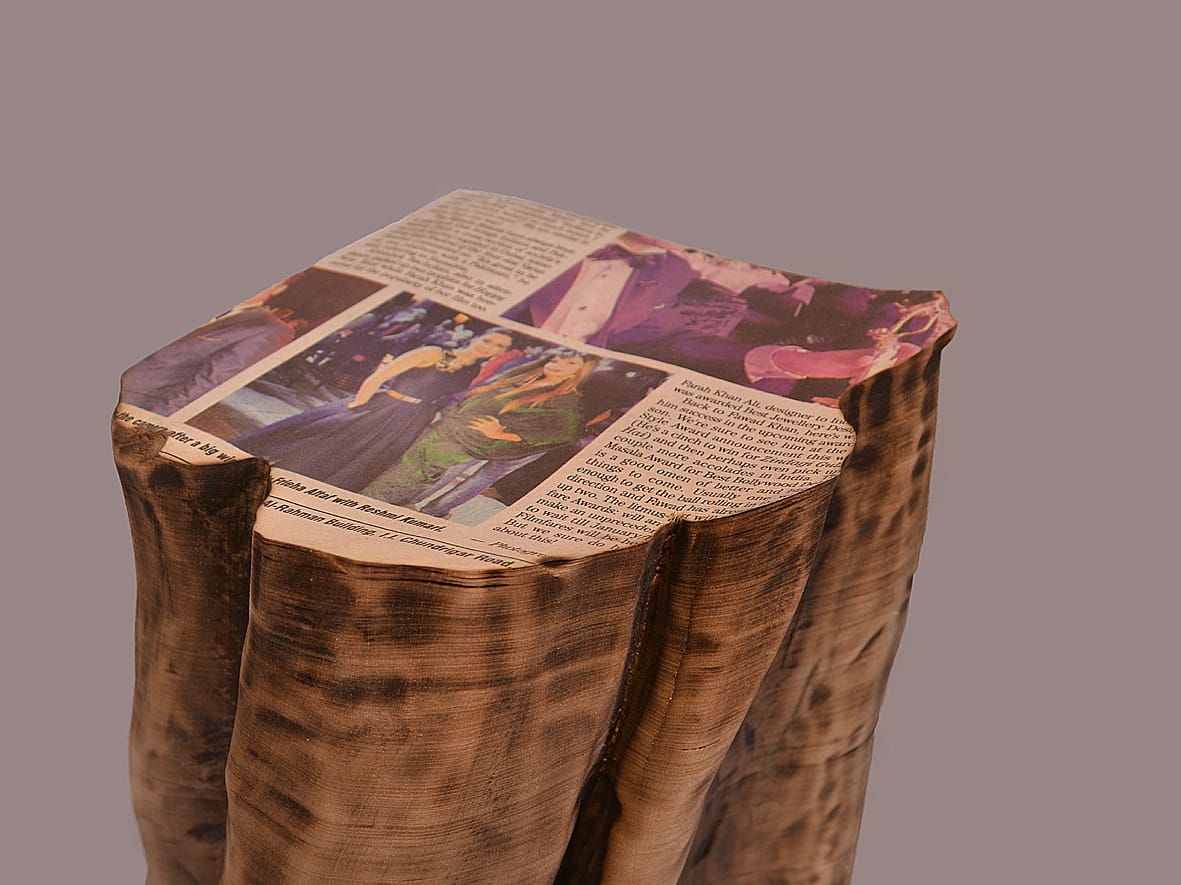In 2011, a small set of young artists in Pakistan and more specifically, in Karachi, had bandedtogether and were producing immensely impactful works
In 2011, a small set of young artists in Pakistan and more specifically, in Karachi, had banded
together and were producing immensely impactful works in media across the board. These
works were remarkable for their integrity of form and content. Many of those artists have further
developed their careers and in fact are in teaching positions in the more prestigious institutions
across the country. Amongst this group, perhaps Fraz Abdul Mateen, a graduate of The Karachi
School of Arts was the artist whose oeuvre most closely invited critical frameworks from within a
postmodernist focus on the deconstructive elements of works that involved the printed word.
This automatically drew one into that area of literary criticism that came to the fore via the works
of Marcuse,for example, and now are useful tools for art criticism. Herbert Marcuse was a
prominent philosopher and social theorist known for his significant contributions to critical theory
and the Frankfurt School. His works, particularly in the mid-20th century, challenged
conventional capitalist and consumerist ideologies, arguing that modern industrial societies,
while offering material comfort, also perpetuated social and psychological repression.
One of his most influential works, “One-Dimensional Man,” explored the idea that advanced
industrial societies created a conformist and homogenized culture, limiting individual freedom
and critical thinking. He contended that the capitalist system’s capacity to fulfill basic material
needs served as a form of social control, suppressing dissent and maintaining the status quo.
Mateen, born in 1982, lives in Karachi, and continues to be actively involved as both an art
practitioner and educator as well. In many ways his work, perhaps illustrating Marcusian theory,
reflects the dynamics of the metropolis – Karachi has multiple areas known for being centers
and hubs of metallurgy, wood markets and mechanics. It would not be out of place to imagine
that this has been instrumental to the sculptor’s own remarkable combination of dedication and
commitment through which he has had to create his own tools in order to literally subjugate his
materials, since the industrial nature of relatively accessible areas contribute to the city’s
identity. Mateen’s sculptures are primarily fashioned from compressed catalogues and books.
Mateen’s choice of medium alone speaks of his determination and intense artistic expression.
The artist’s technique consists of the difficult labour of first compressing large amounts of paper,
and then the formation of shapes built up in stages, and treatment of the surfaces of the objects,
to finally produce earth-coloured sculptures of fascinatingly intricate texture and form.
To gain a certain perspective on mateen’s oeuvre, we may learn from Sigmund Freud’s theory of
sublimation, which is a concept in psychoanalysis that suggests individuals can redirect their –
otherwise uncontrollable – unconscious desires and impulses into socially acceptable and
productive activities. Instead of repressing or acting out these impulses in harmful ways,
individuals channel them into creative, intellectual, or constructive pursuits. To jump into the
deep end, as it were, we can continue in the same vein and refer to Freud’s exploration of the
interplay between human instincts and art, and state that it finds a unique manifestation in
Mateen’s work. Freud’s theories were not specifically tailored to modern artists of his time, and
nor should they be taken as complete gospel, but they do provide a compelling framework to
understand the motivations behind Mateen’s artistic creations and how they manifest in his
unique sculptural approach. Incidentally, he is also accomplished in drawing, and often
produces images that seem to be templates which could probably serve as the basis of ideas
that are to be created in three-dimensional form.
Some time ago, Mateen contributed to an exhibition at the VM Gallery, Karachi. These were
works in clay and terracotta, and, quoting a report, “Fraz Abdul Mateen’s dialogue seems to
have been initiated not by him, but by society, when he explains how “Human reactions are
unlimited when it comes to different situations. I find these strange and unusual reactions
intriguing. I have concentrated on human behaviors by experimenting on clay surfaces in my
recent works”.(Sculpture: Down To Earth; Dawn Newspaper, July, 2009.)
It could be claimed that a type of primitivism becomes particularly evident in Mateen’s choice of
subject matter: mask-like heads with odd symbolic appurtenances, and objects simulating
natural wood. Masks and sculptural human heads are said to have deep-rooted cultural and
psychological significance, often associated with hidden identities, suppressed emotions, and
the dichotomy between the private self and the socially projected image. By sculpting these,
Mateen could be engaging in a form of sublimation, externalizing and grappling with complex
psychological themes through his artistic practice. And the viewer cannot but help respond
almost tangibly, from within their own perceptual systems.
Amongst the most striking works are those that have been shaped as human heads, but then
allowed to collapse sideways, much in the same way that books will slide symmetrically when
not supported on one side. This slippage achieves a hugely auratic condition, manifesting an
instantaneous rendition of a type of subtextual storytelling involving printed text itself.
Also, the natural objects that Mateen sculpts could be seen as the expression of the inherent
human connection to nature, a connection that many theories acknowledge as an intrinsic part
of the human psyche. The act of shaping natural forms from paper layers might be Mateen’s
way of exploring the relationship between the primal instincts that bind humans to the natural
world they have left behind, and the urbanized, structured reality in which they now live. We are
accustomed to believe that cultural influences, personal experiences, and individual artistic
philosophies play a pivotal role in shaping the motivations and outcomes of creative endeavors.
In this sense, Mateen stands out as an artist who brings to life the transformative power of art,
inviting viewers to, at one level, contemplate the layers of human consciousness and on
another, the dynamic interplay between instincts and creativity




COMMENTS